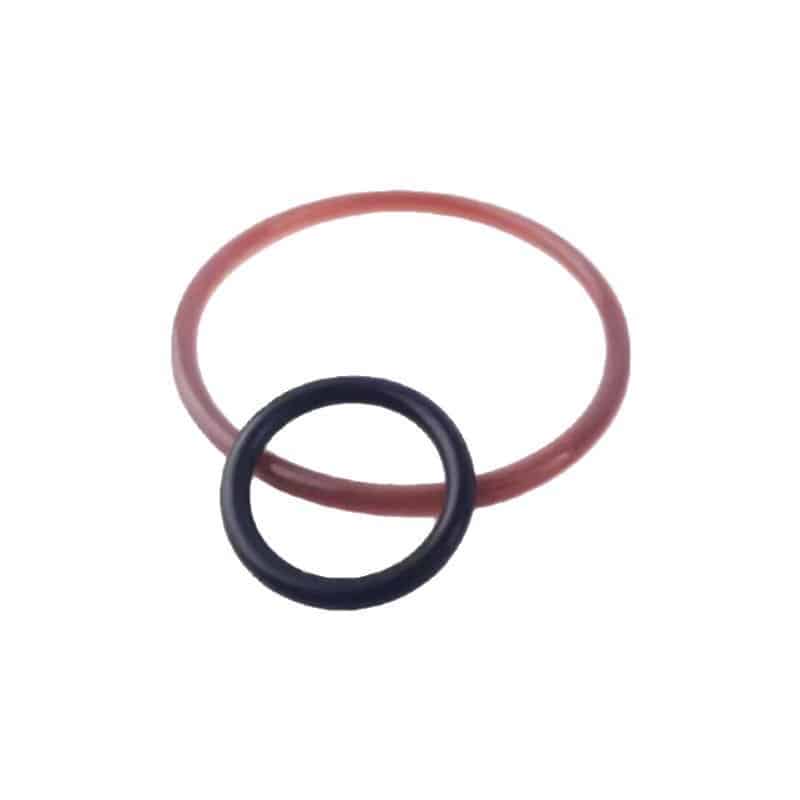Hydraulic leaks in excavators are a costly problem. I’ve seen firsthand how the right seals prevent downtime and extend machine lifespan.
Excavator hydraulic seals are essential for maintaining system pressure, preventing leaks, and protecting cylinders from wear and contaminants.

Let’s break down how to choose the right seals for your excavator.
Why Are Hydraulic Seals Critical for Excavator Performance?
Hydraulic seals:
- Prevent fluid leaks, maintaining pressure
- Block dust, debris, and water ingress
- Reduce wear & friction in cylinder components
- Ensure smooth, reliable machine operation
For sealing basics, read our Guide des principes de fonctionnement des joints toriques.
Which Hydraulic Seals Are Used in Excavators?
| Type de joint | Fonction | Idéal pour |
|---|---|---|
| Joints de piston | Stop fluid bypassing piston | High-pressure lifting/digging |
| Joints de tige | Prevent rod-end leakage | High-temp & aggressive fluids |
| Joints racleurs | Clean rod surfaces | Muddy, dusty job sites |
| Porter des bagues | Prevent metal contact | High-load lateral support |
| O-Rings & Backup Rings | Static sealing support | Cylinder internals |
Explorer Seal Kits for Cylinders pour les applications d'excavatrice.
What Materials Are Best for Excavator Hydraulic Seals?
| Matériel | Plage de température | Meilleure utilisation | Avantages |
|---|---|---|---|
| TPU | -40°C à 100°C | Joints de tige et racleurs | Flexible, wear-resistant |
| NBR | -30°C à 110°C | General seals | Cost-effective, oil resistant |
| FKM | -20°C à 200°C | High-temp sealing | Résistance à la chaleur et aux produits chimiques |
| PTFE | -200°C à 260°C | Rod & piston seals | Extreme durability, chemical proof |
| POM | -40°C à 120°C | Porter des bagues | Haute résistance, faible frottement |
✅ Conseil: For excavators, TPU & PTFE offer the best balance of wear resistance and chemical durability.
Comment mesurer les joints hydrauliques des excavatrices ?
Correct sizing is key to leak prevention:
- Measure Inner Diameter (ID)
- Measure Outer Diameter (OD)
- Measure Cross-Section (CS)
| Type de joint | IDENTIFIANT | OD | CS |
|---|---|---|---|
| Joint de tige | 50 mm | 60 mm | 5 mm |
| Joint de piston | 75 mm | 85 mm | 7 mm |
| Joint racleur | 90 mm | 100 mm | 6 mm |
Besoin de tailles personnalisées ? Essayez notre Outil de fabrication de joints toriques.
Common Hydraulic Seal Failures & How to Prevent Them
| Cause de l'échec | Prévention |
|---|---|
| Chaleur excessive | Use FKM/PTFE for high-temp zones |
| Contaminants | Maintain wiper seals, replace as needed |
| Poor Installation | Always use seal installation tools |
| Fluid Incompatibility | Select chemical-resistant materials |
| Wear & Aging | Regular inspections, scheduled replacements |
Notre Seal Failure Guide covers prevention in detail.
Why Upgrading Excavator Seals Saves You Money
- 70% of hydraulic failures are seal-related
- Poor seals lead to oil leaks, loss of power, and costly downtime
- Upgrading to high-performance TPU & PTFE seals reduces maintenance and increases machine lifespan
For heavy-duty sealing, check Hydraulic Seal Solutions.
Where to Get Reliable Excavator Hydraulic Seals?
Hengoseal offers:
- OEM-compliant excavator seals
- High-performance TPU, FKM, PTFE materials
- Fast delivery, no MOQ
Explore top products:
📩 Courriel : [email protected]
📞 WhatsApp : +86 17622979498
Conclusion
Choosing the right hydraulic seals is essential for excavator performance and longevity. Invest in high-quality TPU and PTFE seals to reduce downtime and maintenance costs.
Get Excavator Seals That Last – Contact Hengoseal Today
📩 Courriel : [email protected]
📞 WhatsApp : +86 17622979498
Related topic
How to Choose Hydraulic Seal Kits by Size
Common Hydraulic Seal Failures & Prevention
How to Reduce Downtime with Better Seal Selection


